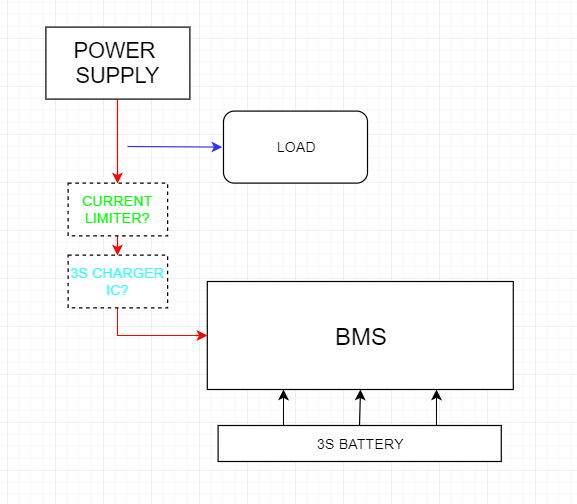I asked and learned that a BMS doesn't control charge current.
BMS adjusting charge current
I need to reduce charge current beacuse the wall adapter can provide a maximum of 1 A, the batteries draw a lot of current while they're are charging.
From the internet the solution can be
- Adding current limiting circuit.
- Adding a charger circuit.
Considering the load always stays connected even during the charging process. This is a requirement.
I don't have much experince in this area. I would be very grateful if you could suggest IC and circuit topology.
This is my old opinion:

Probably, this is the what I need:

